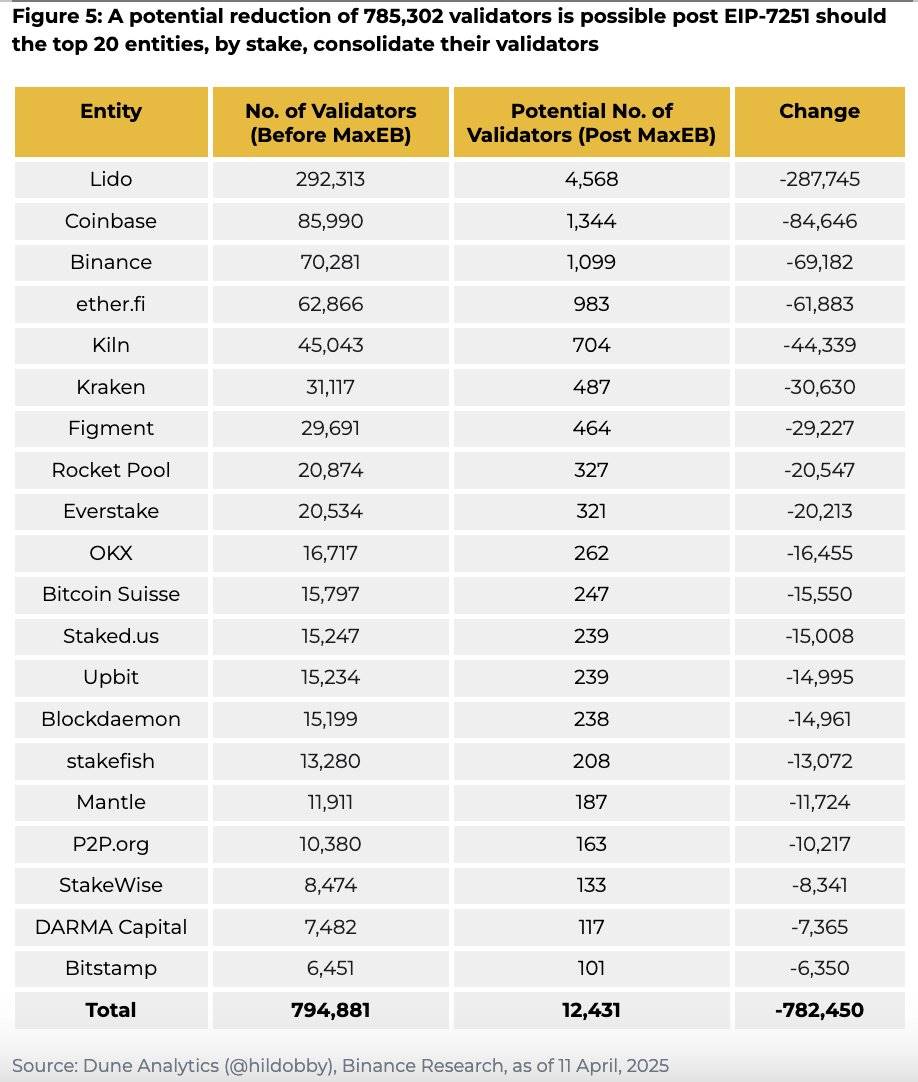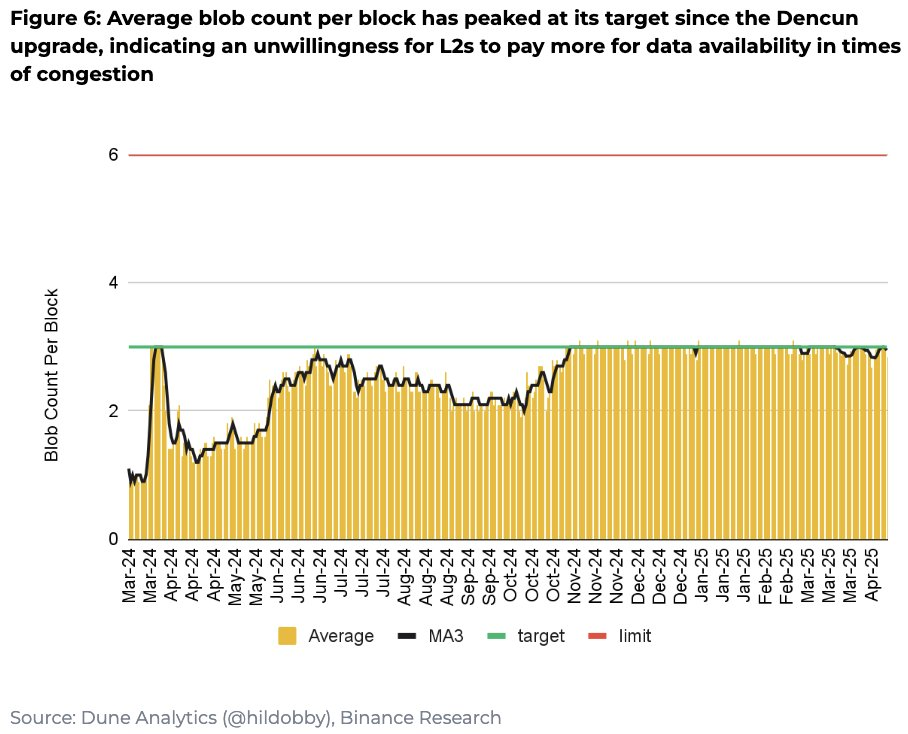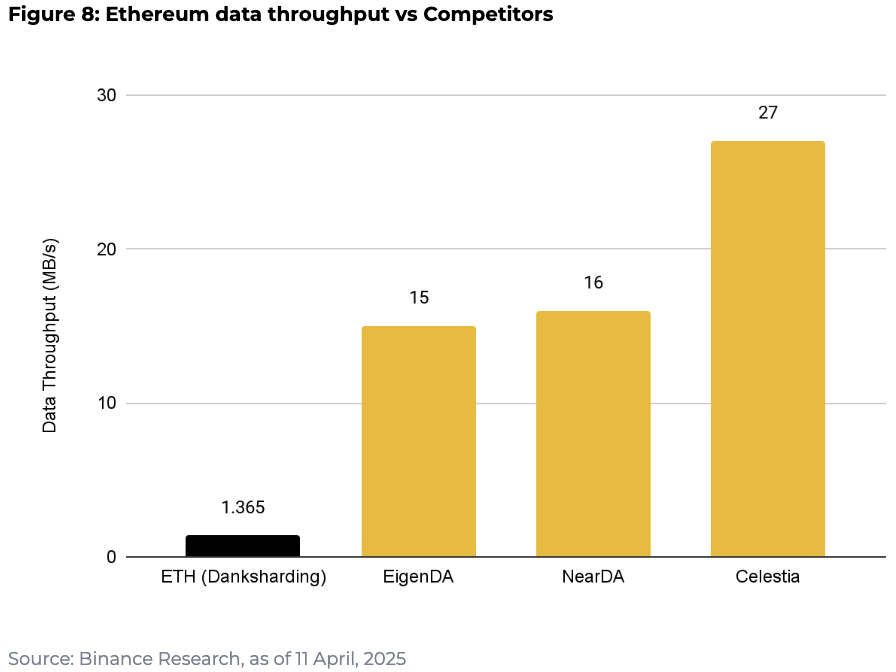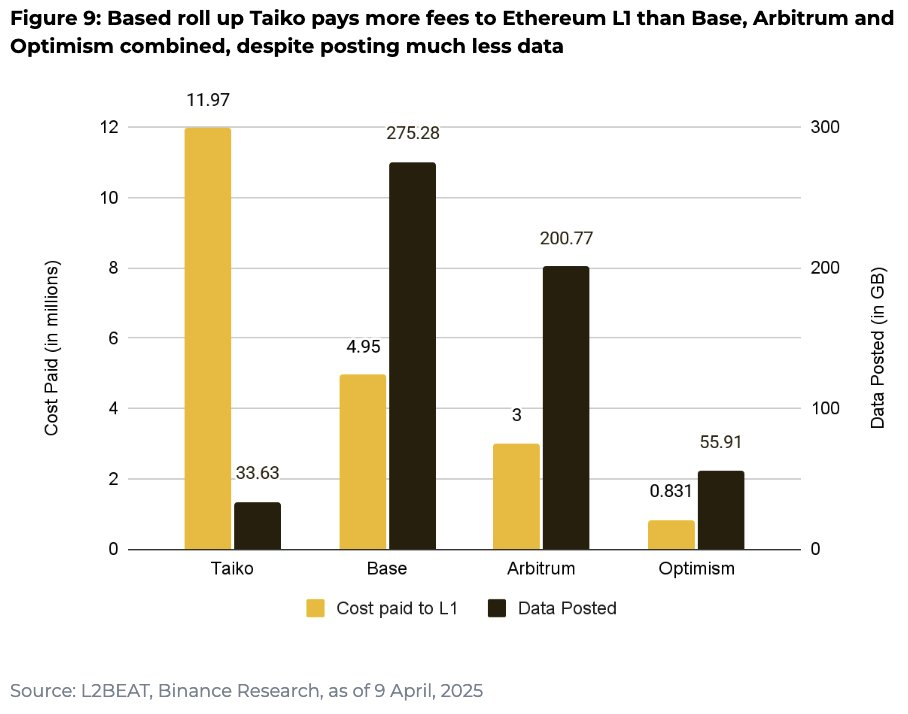Author: Binance Research
Translated by: TechFlow
The Pectra upgrade is now live on the ETH mainnet.
Dive deep into the core improvements of this upgrade, its significance for the Ethereum roadmap, and our perspective on its potential impact on $ETH value accumulation.

1/ What is Pectra?
The Pectra upgrade focuses on staking, data blobs, and account abstraction, primarily involving the following key EIPs (Ethereum Improvement Proposals):
EIP-7251: Increasing the maximum effective balance (MaxEB) from 32 ETH to 2,048 ETH
EIP-7691: Increasing data blob capacity from 3/6 to 6/9
EIP-7702: Upgrading externally owned accounts (EOA) to smart contract wallets
2/ EIP-7251 - Increasing the Maximum Effective Balance (MaxEB)
With over 1 million validators currently, this has put significant pressure on the Ethereum Layer 1 (L1) network. By raising the maximum effective balance cap to 2,048 ETH, large staking service providers can consolidate their validator nodes, previously limited to 32 ETH per node.

3/ EIP-7691 – Increasing Target and Maximum Data Blob Capacity
Since the Dencun upgrade, the average number of data blobs has reached the target, meaning that during network congestion, Layer 2 (L2) networks are reluctant to pay higher fees for data availability (DA). Increasing data blob capacity should enable more data to be uploaded to L1 while maintaining low costs.

4/ EIP-7702 – Transforming EOA into Smart Contract Wallets
EIP-7702 allows externally owned accounts (EOA) to temporarily set smart contract code executable only during the transaction, supporting features like bundled transactions, gas fee sponsorship, social recovery, and bringing more flexibility.
5/ What's Next for Ethereum?
After the Pectra upgrade, the Fusaka upgrade is expected to be launched in late 2025. This upgrade will further advance Ethereum's Layer 2 scaling roadmap by increasing data blob capacity and potentially introducing EVM (Ethereum Virtual Machine) upgrades.
6/ Fusaka Upgrade Plans
PeerDAS: PeerDAS introduced in EIP-7594 will be a crucial step towards achieving full Data Availability Sampling.
Ethereum Object Format: Aimed at further improving developer experience and user security.
7/ Ethereum's Future
Despite Ethereum's commitment to the Layer 2 scaling roadmap, questions remain about its long-term competitiveness as a data availability layer and how to achieve sustainable value accumulation.
8/ Ethereum as a Data Availability Layer
Even with full Danksharding implementation, Ethereum will still lag behind peers in raw data throughput. However, as the most secure network with over 1 million validators, Ethereum's security is crucial in data correctness verification.

9/ $ETH Value Controversy
Proposals to reprice the data blob market might prompt Layer 2 networks to seek cheaper alternatives, and expecting L2 to support ETH through partial fees is too subjective. Support for value accumulation is strongest with Ethereum Rollups, but this is currently not a priority on the roadmap.







